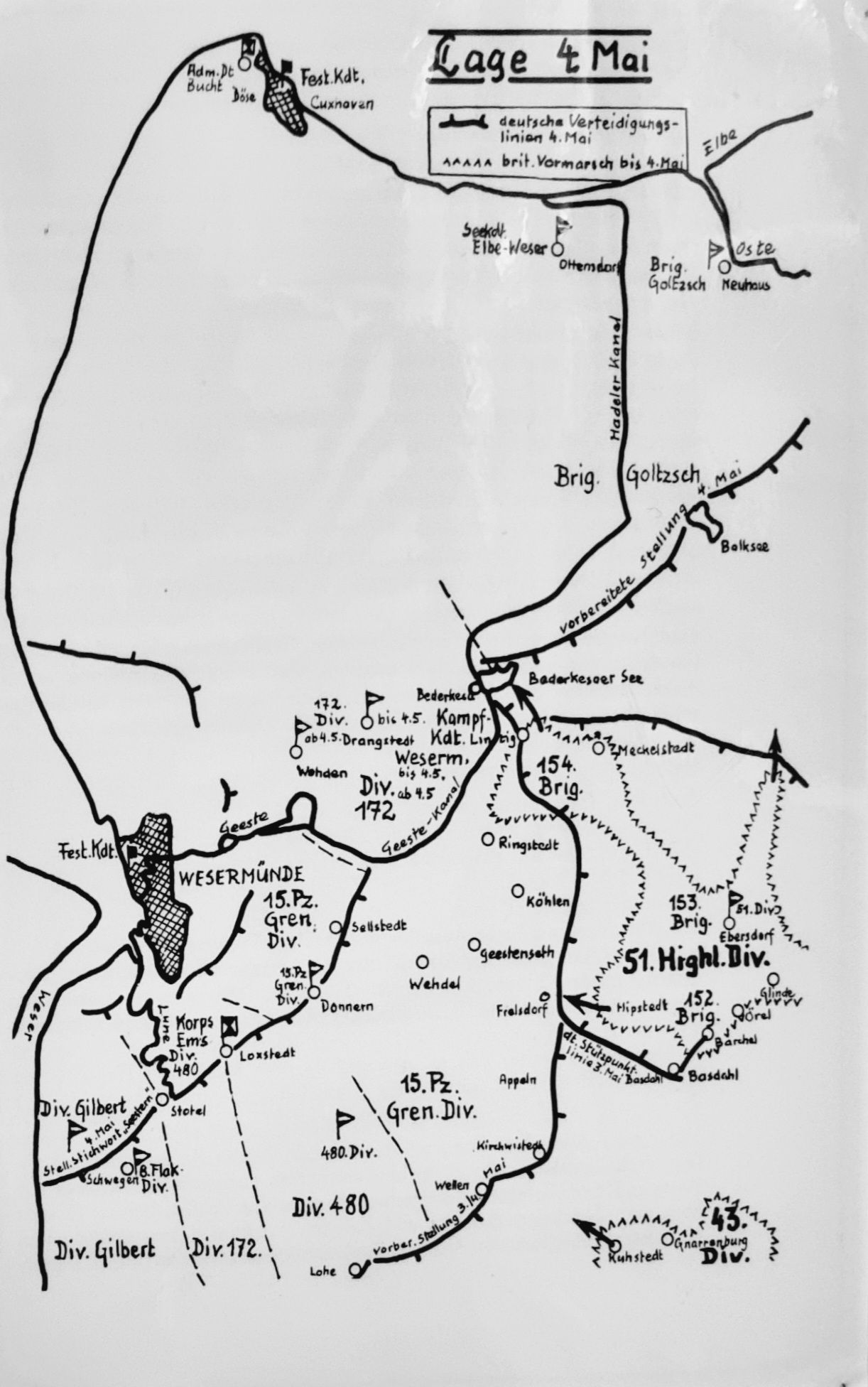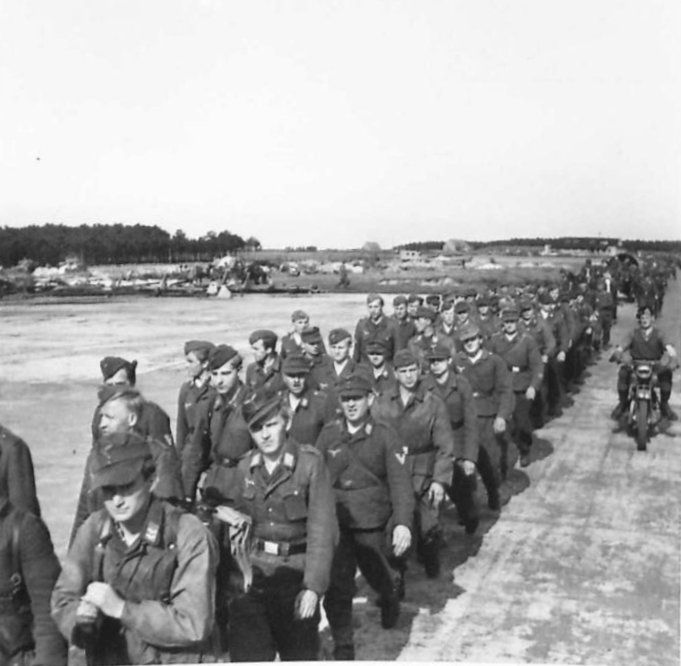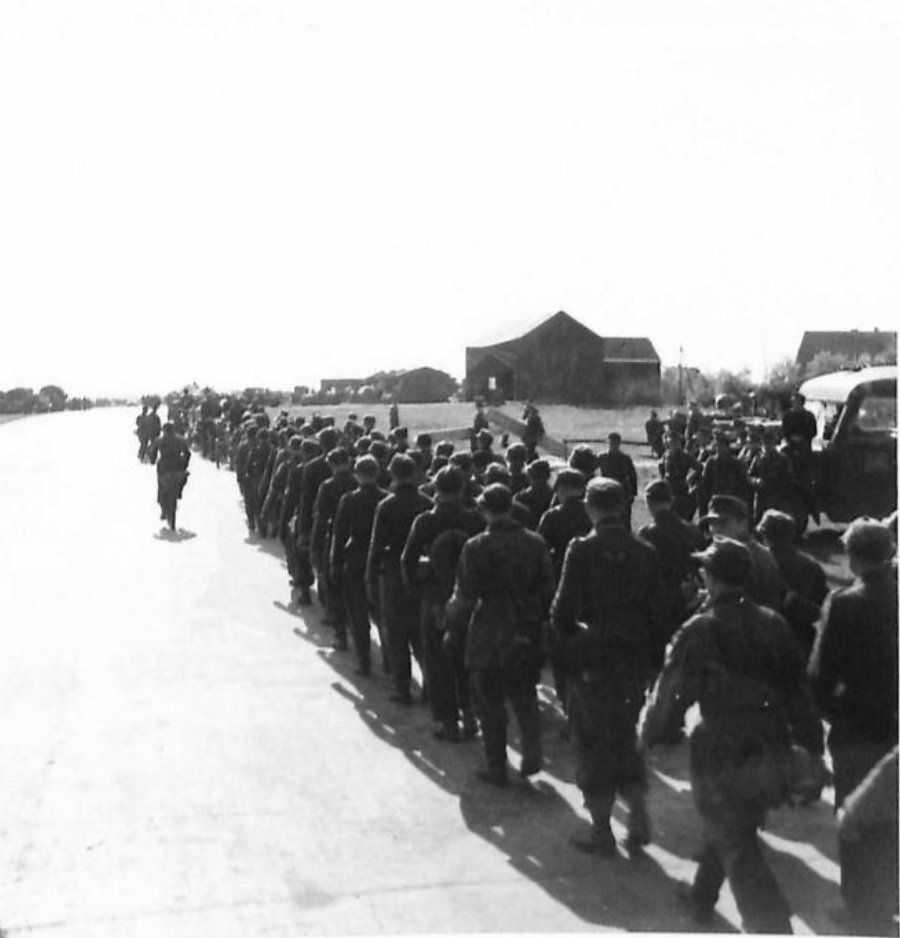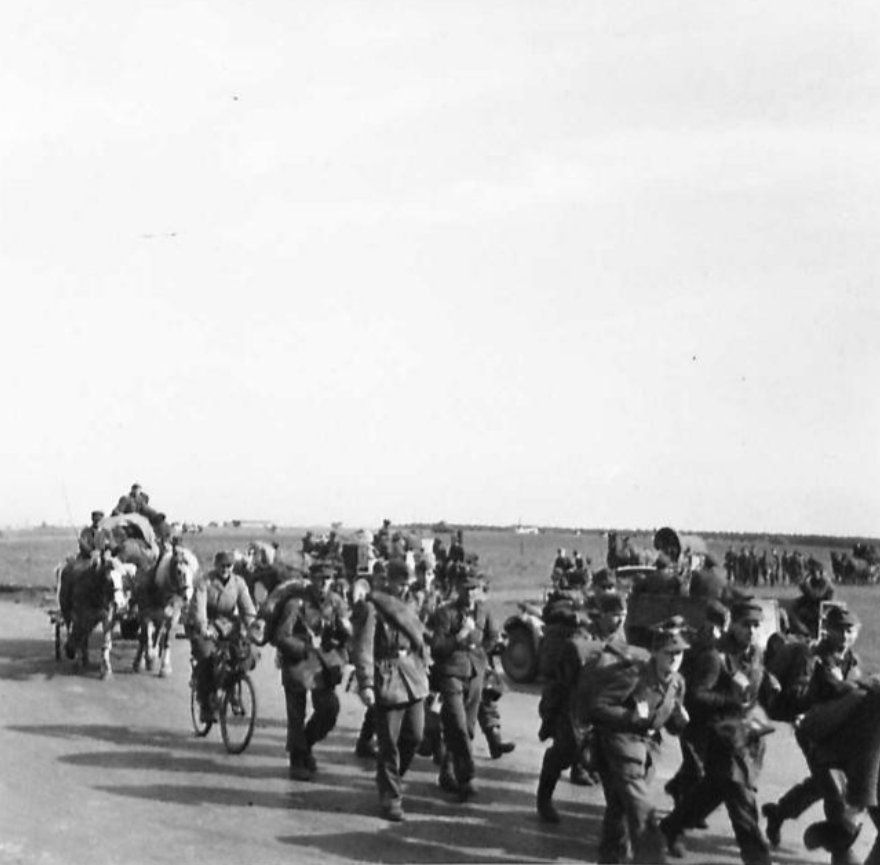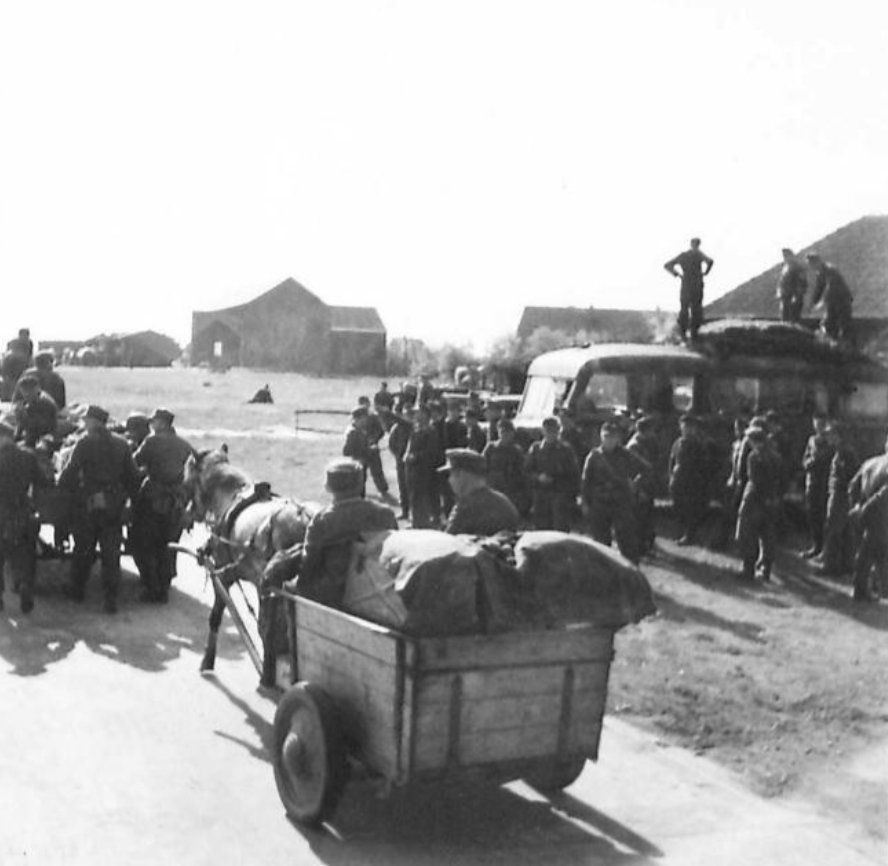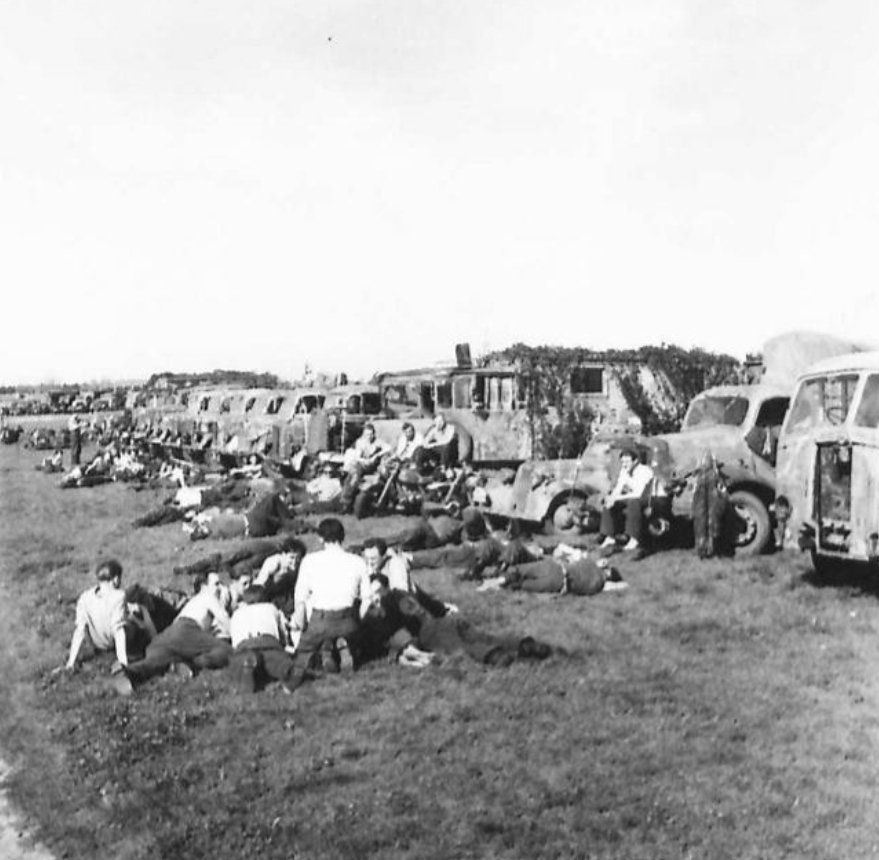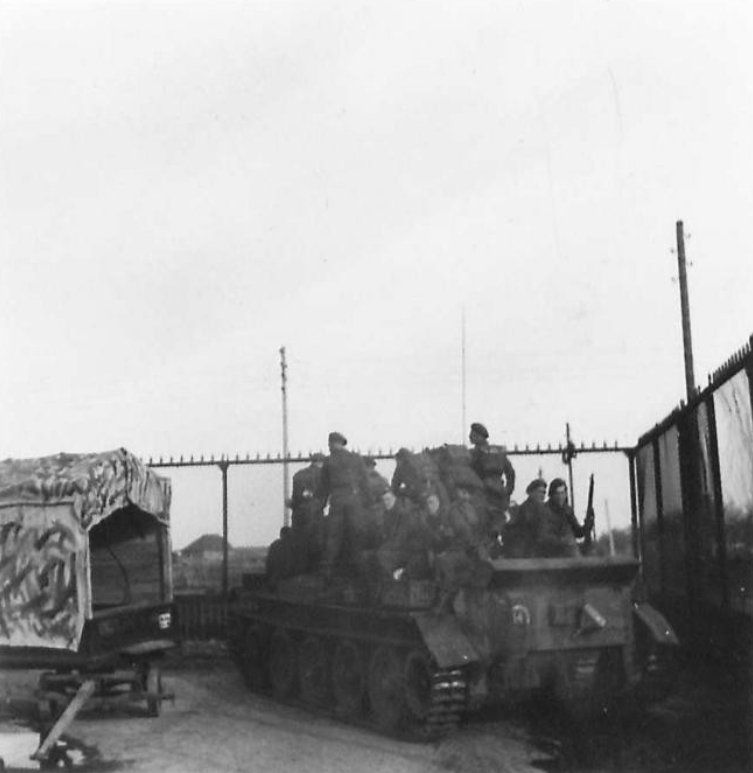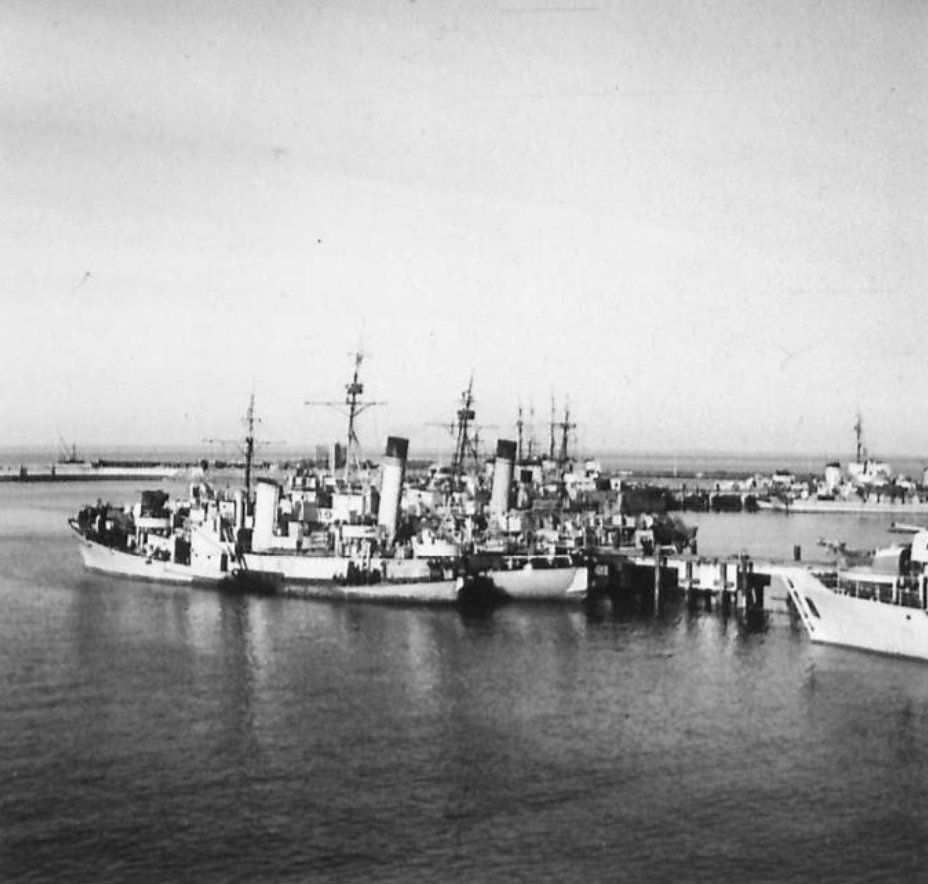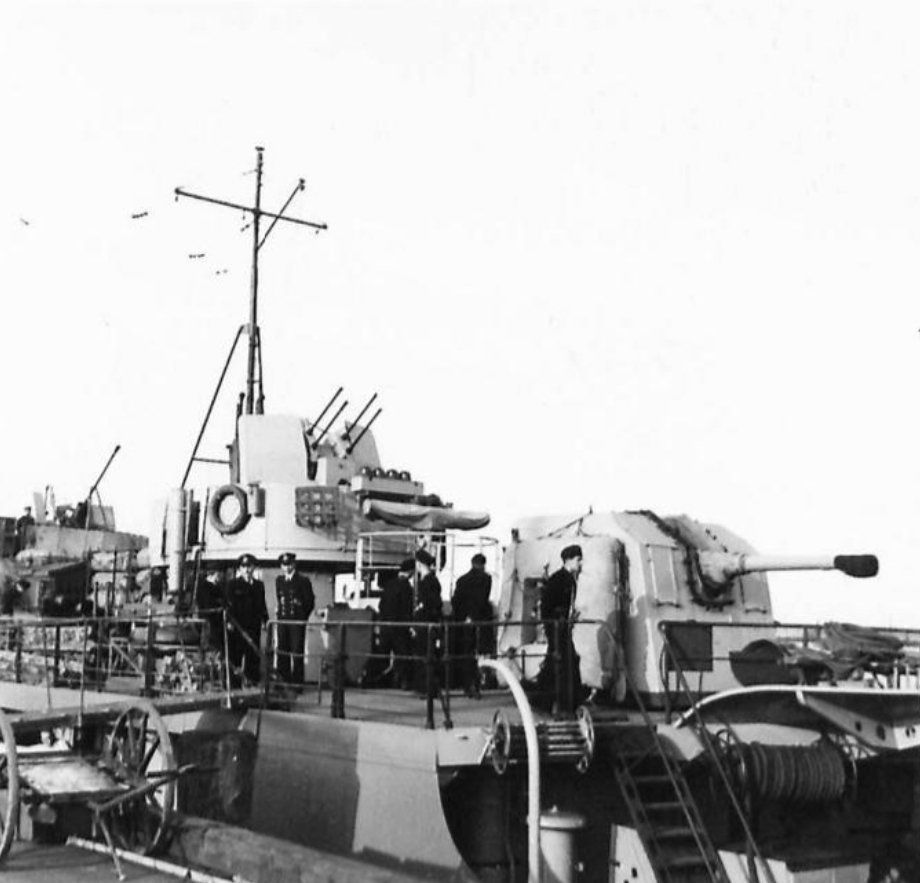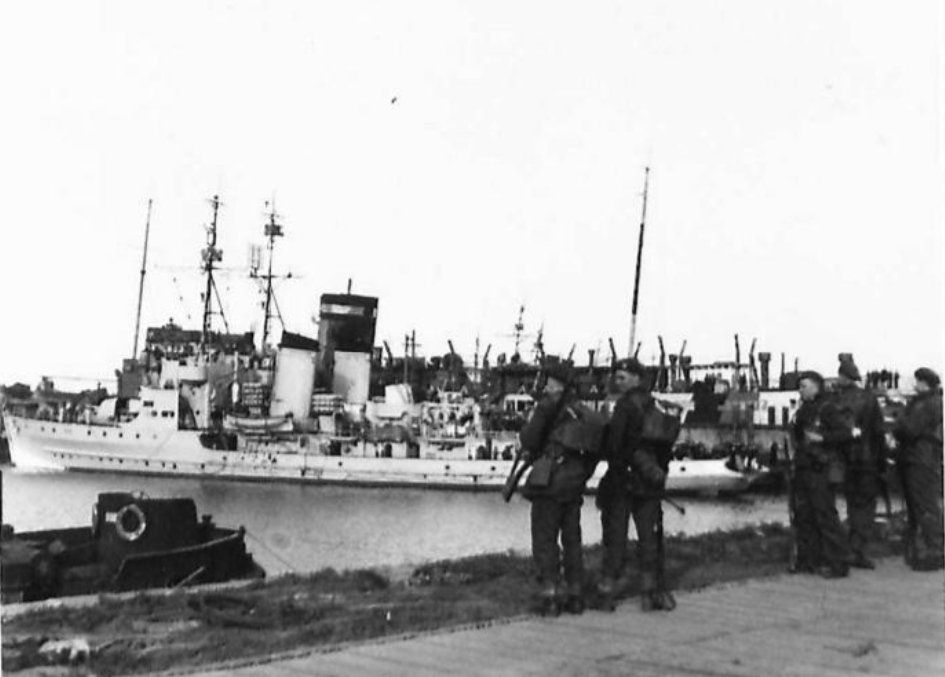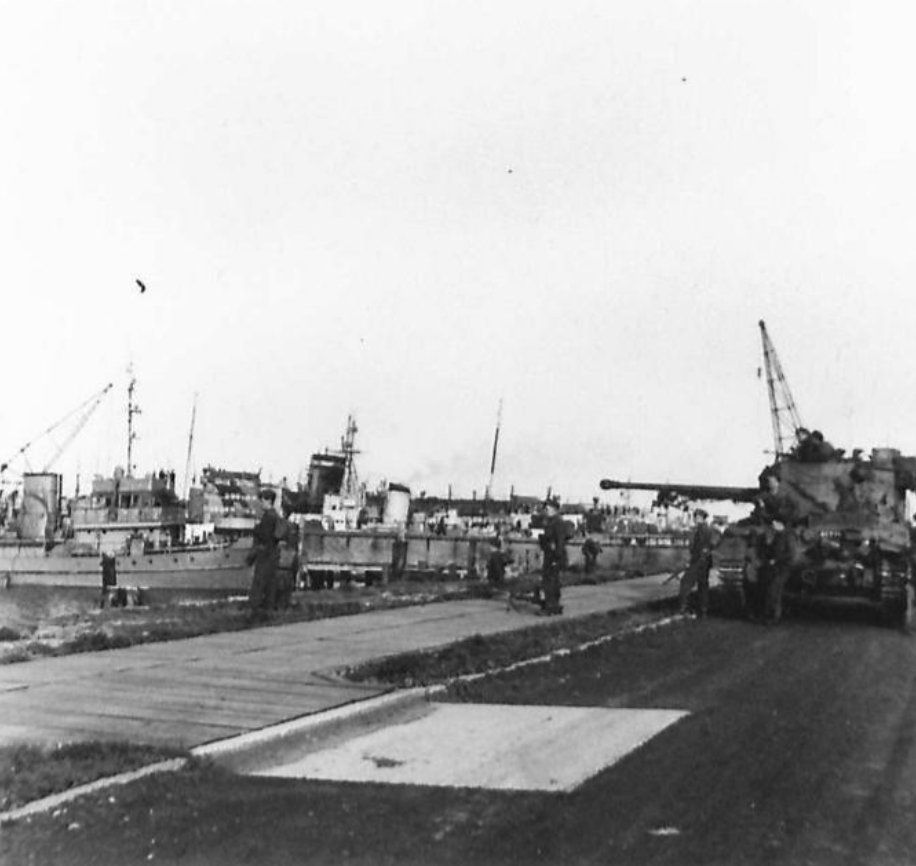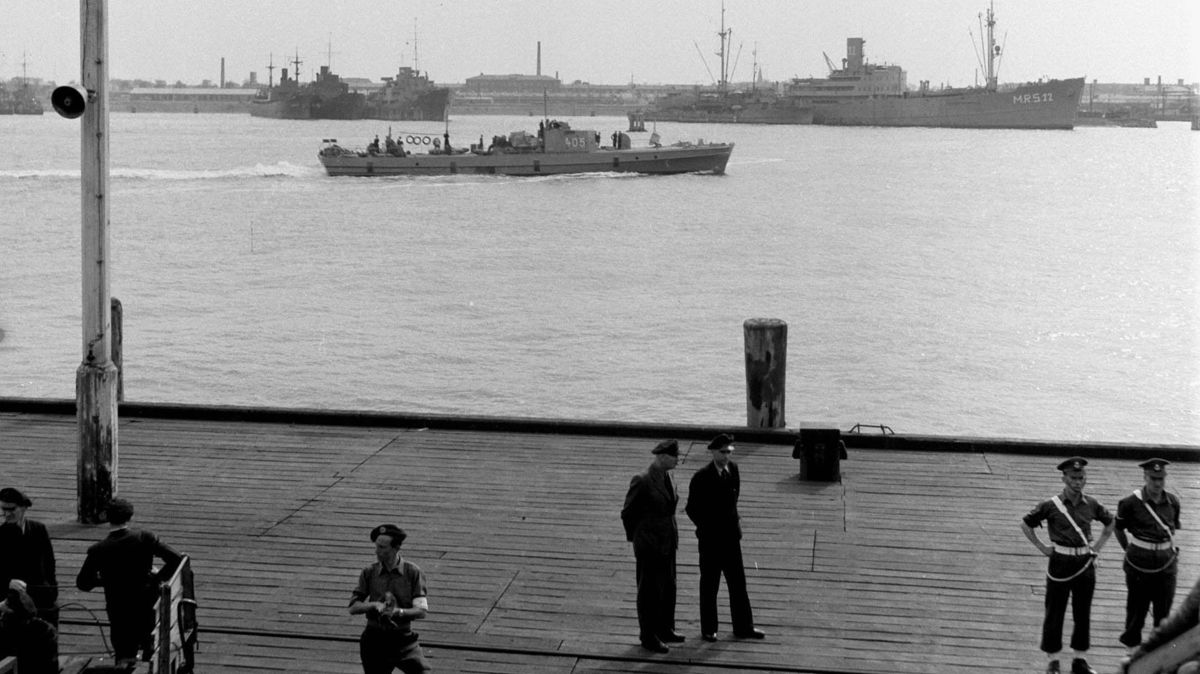Surrender of Cuxhaven07.05.1945
Bereits Ende April 1945 drangen alliierte Truppen von Westen her über Belgien und die Niederlande in das Emsland, Richtung Elbe - Weser Bereich vor. Hierbei ließ man vermutlich aus taktischen Gründen den nördlichen Teil des heutigen Landkreises Cuxhaven erst einmal links liegen und setzte den Hauptschwerpunkt auf die größeren Städte Bremen, Hamburg, Kiel, Lübeck.
Diese kurze Pause nutzten viele Verbände der zersprengten Deutschen Wehrmacht sich Richtung Norden abzusetzen, um per Schiff nach Schleswig Holstein entkommen zu können.
Cuxhaven war nicht nur wegen der bereits ortsansässigen Einheiten schon sehr stark aufgestellt, sondern auf Grund der zusätzlichen Armeekräfte jetzt bis an die Zähne bewaffnet.
Nach anschließender Zählung durch die britische Armee waren nach der Kapitulation gut 11.000 Soldaten verschiedenster Einheiten in der Stadt
Cuxhaven. Cuxhaven selbst wurde bereits im November 1944 zur Festung ernannt,
Kapitän zur See
Herbert Sorge wurde dessen Kommandant. Dieser Status gab der Festungskommandantur eine größere Selbsständigkeit bei ihren Entscheidungen bezüglich der Verteidigungsmaßnahmen..
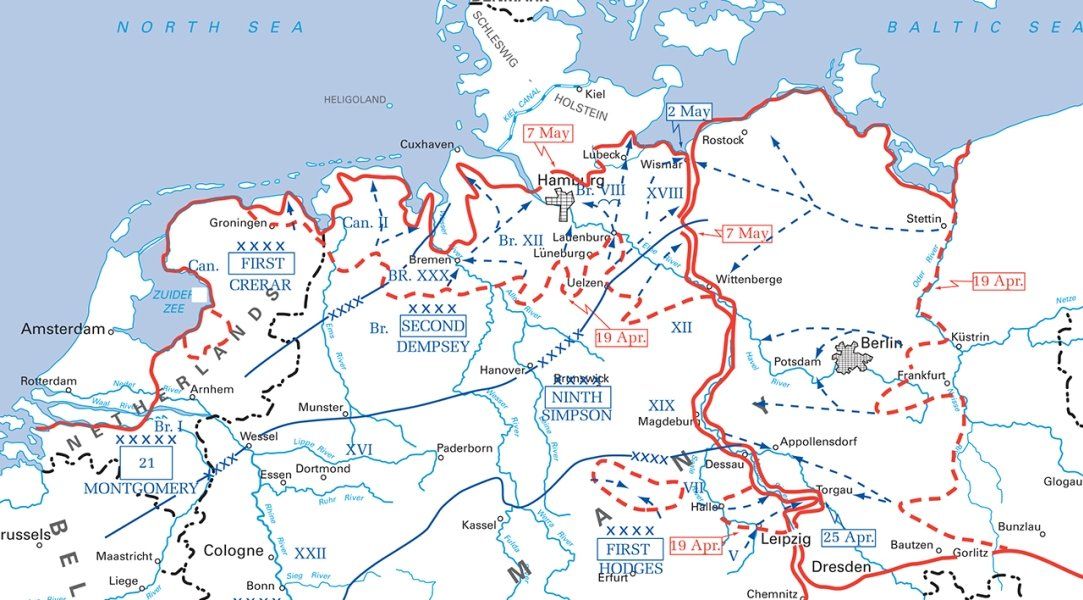
Weiterhin bedeutete dies natürlich auch kämpfen bis zum bitteren Ende und verbrannte Erde, dem Feind nichts mehr übrig lassen. Das war natürlich jedem klar. Herbert Sorge übernahm den Posten des Kommandanten im Abschnitt Cuxhaven bereits im Oktober 1944. Ihm und seinem Stab entging natürlich nicht das Vordringen der alliierten Truppen in den norddeutschen Raum, daher war er entsprechend beunruhigt über das immer näher kommende Kampfgeschehen.
Zudem waren wenige Tage vorher die schweren
Festungen auf Helgoland und der
Insel Wangerooge durch die amerikanischen und britischen Bomberverbände dem Erdboden gleich gemacht worden. Obwohl die Stadt Cuxhaven durch die Marineflakabteilung 214 sehr stark abgesichert war, wäre diese im Falle eines solch massiven Luftschlages wie es die beiden Inseln erleben mussten, ebenso vernichtend worden. Die Folge wäre gewesen, dass die Infrastruktur der Stadt komplett zerstört worden wäre und es mit äußerst großer Wahrscheinlichkeit sehr große Verluste unter den Soldaten und vor allen Dingen der Zivilbevölkerung gegeben hätte.
In Absprache mit Oberbürgermeister Wilhelm Klostermann war man sich vermutlich deshalb schnell einig, das die Stadt Cuxhaven kampflos an die britischen Truppen übergeben werden müsse, um ein verheerendes Blutvergießen zu verhindern. Diese mutige Entscheidung war im Hintergrund des Hochverrats am Führer mit Sicherheit nicht leicht gewesen, aber die einzige sinnvolle und menschlich richtige Entscheidung die getroffen wurde.
Umgehend entfernte man auf Anweisung die bereits aufgebauten Panzersperren, Gräben und Blockaden. Außerdem wurden die bereits vorbereiteten Sprengladungen an den Kaimauern des Hafens heimlich wieder
rendered harmless. Sorge also had the Hitler Youth disarmed and all batteries in the city secured to prevent any individual actions from breaking out into fighting. On May 3, 1945, the city of Cuxhaven was assured that it would be spared one last battle when it was declared an open city. In martial law, an open city is a city or town that is not defended and therefore may not be attacked or bombed. The basis for this is Article 25 of the Hague Convention on Land Warfare, which does not use the term open city. Over the next few days, Commander Sorge went to the British lines to negotiate the surrender of the Cuxhaven fortress and to ratify the capitulation on May 7, 1945. The Allied commanders made it clear once again that any flare-up of resistance would be crushed immediately and with all possible severity. Then the exciting march of the Guards Armored Division began from the east, under extreme nervousness. Herbert Sorge had to take a seat at the front of the first tank of the advancing force, so that he could serve as a living target to prevent even the last determined Nazi from making the decisive blow. Fortunately, there were no special incidents that could have tipped the tense situation.

Quelle: Imperial War Museum/GB - IWM BU 5548
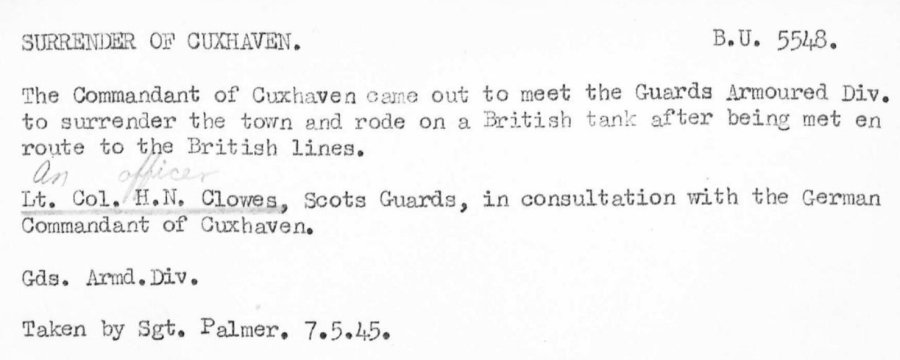
Photo on the left: Cuxhaven's fortress commander Captain "Herbert Sorge" in talks with officers of the Guards Armored Division - Royal Army before driving on a tank through the British lines to Cuxhaven. The negotiations for the surrender and capitulation were held at Neuhaus. This photo was also taken here.
Quelle: Imperial War Museum/GB - IWM BU 5548
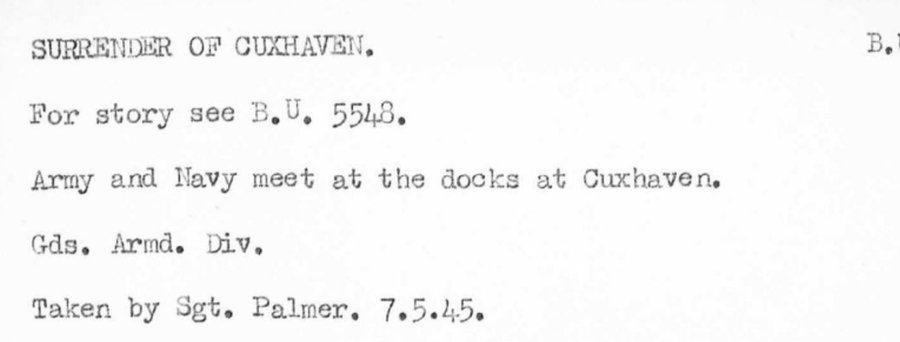
Foto Rechts:
Herbert Sorge mit einigen Soldaten seines Stabes und englischen Soldaten bei der Ankunft in Cuxhaven. Nach Berichten soll dies laut seinen Angaben für ihn persönlich die größte militärische Demütigung überhaupt gewesen sein. Er habe dies aber in Kauf genommen, um Schaden von der Zivilbevölkerung abzuwenden.
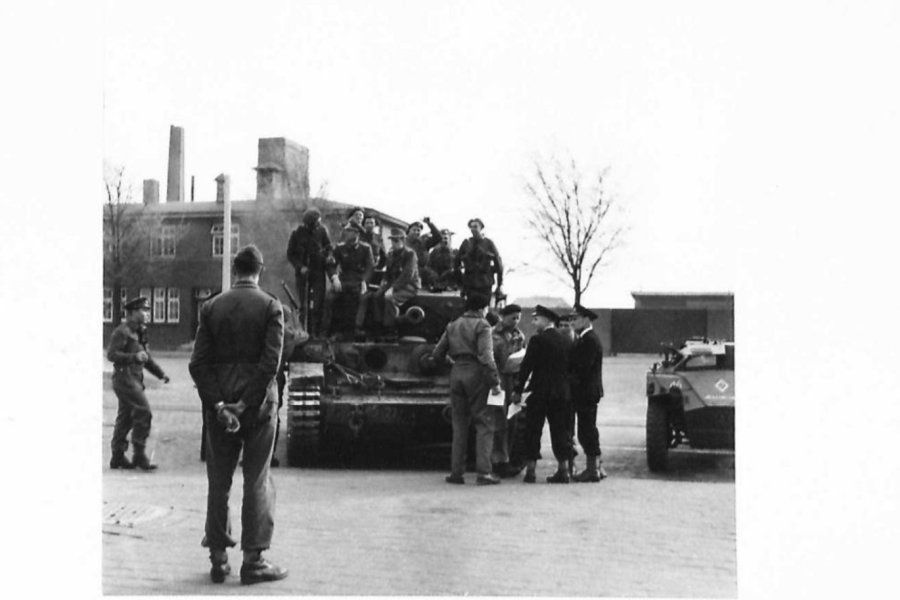
Quelle: Imperial War Museum/GB - IWM BU 5551
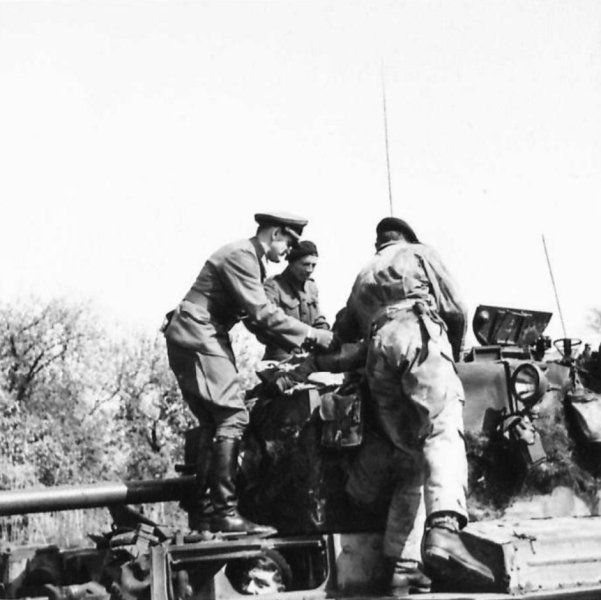
Quelle: Imperial War Museum/GB - IWM BU 5549

Picture left: Herbert Sorge at a briefing on a British tank.
Quelle: Imperial War Museum/GB - IWM BU 5549

Picture right: Military personnel of the British and German army in the city center of Cuxhaven, including some officers and Herbert Sorge in front of the "Haus Atlantik" in Bahnhofstrasse Cuxhaven.

Quelle: Imperial War Museum/GB - IWM BU 5549
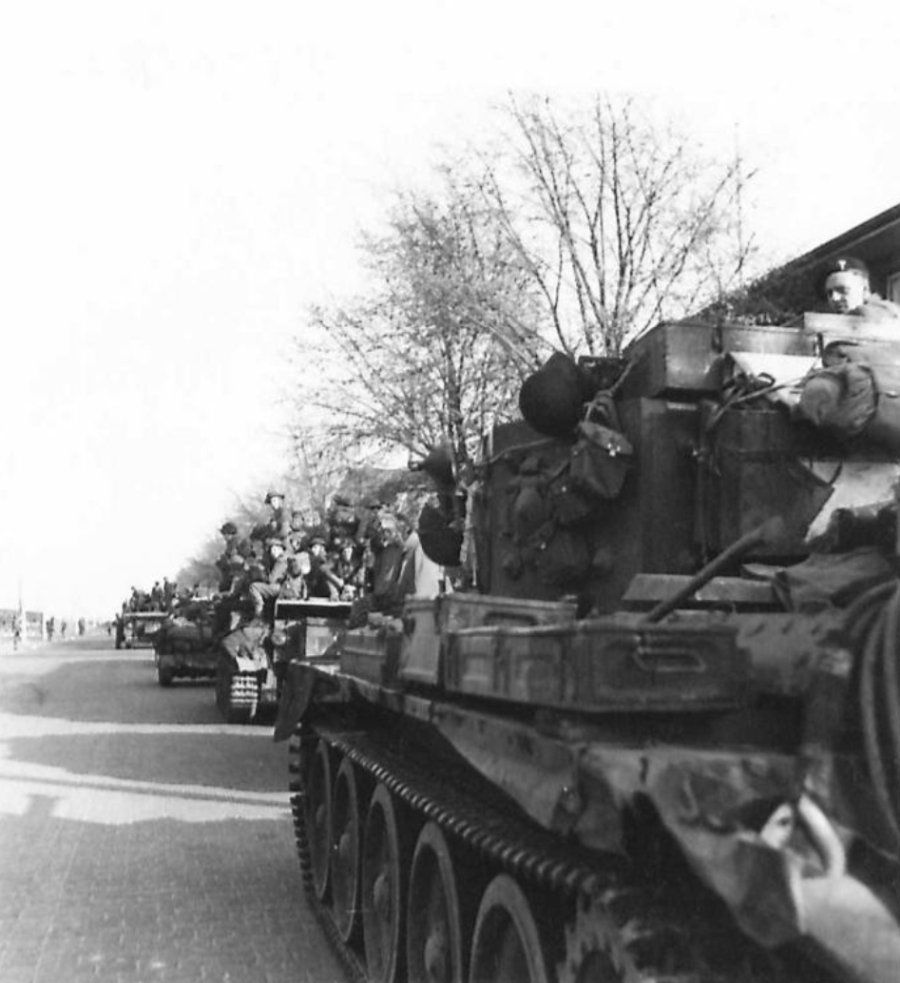
Quelle: Imperial War Museum/GB - IWM BU 5552

Photo Link: British vehicle convoy before driving into the port area of the city
Quelle: Imperial War Museum/GB - IWM BU 5552

Photo right: German soldiers in front of a British reconnaissance vehicle listen intently to their fate on the radio.

Quelle: Imperial War Museum/GB - IWM BU 5550
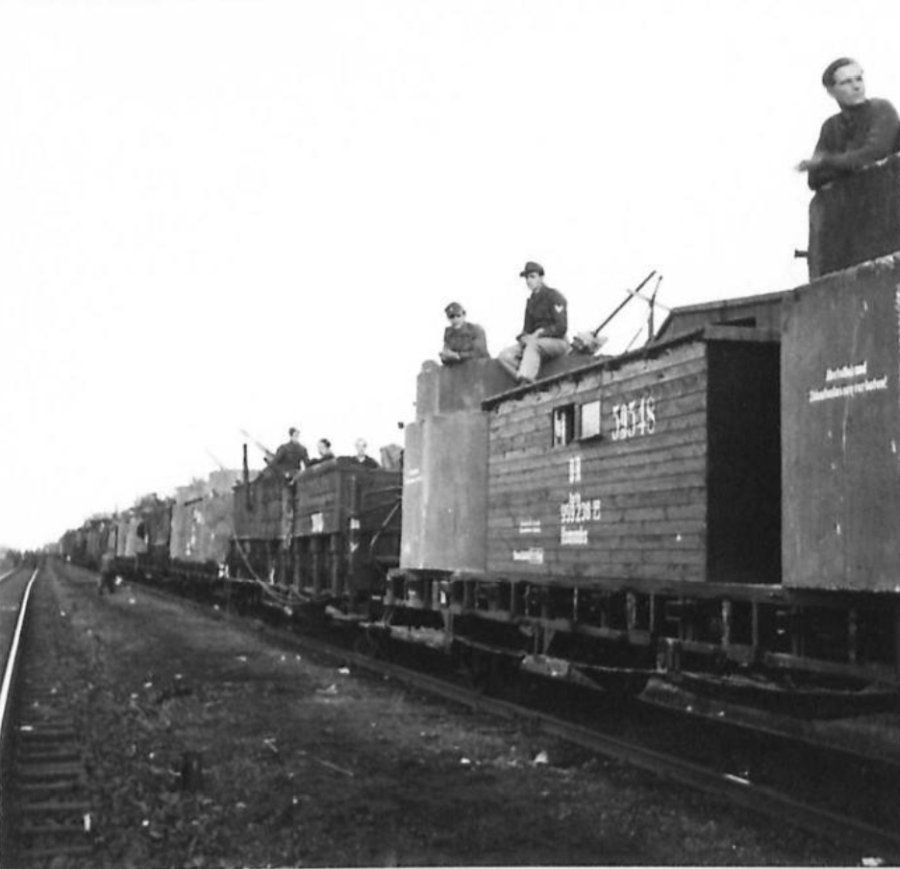
Quelle: Imperial War Museum/GB - IWM BU 5562

Photo left: A complete tank train also surrendered to the British troops in Cuxhaven.

Photo right: The heavily armed train here probably in Basbeck.
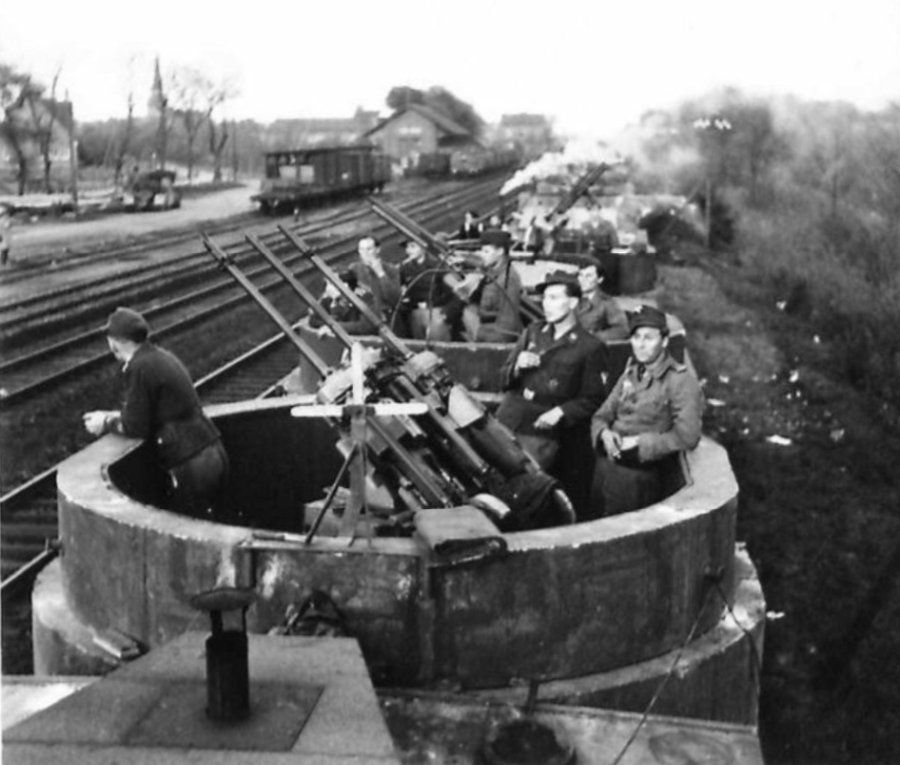
Quelle: Imperial War Museum/GB - IWM BU 5562
U-boats at the end of the war in Cuxhaven
| Identifier / Type | Date of surrender | captain |
|---|---|---|
| U - 291 / VIIC | 07.05.1945 | Lt. Hermann Neumeister |
| 07.05.1945 | Oblt. Johann Stegemann | |
| U - 883 / IXD 42 | 07.05.1945 | Oblt. Johannes Uebel |
| U - 1103 / VIIC 41 | 07.05.1945 | |
| The - 1406 / XVIIB | 07.05.1945 | Lt. Werner Kluge |
| The - 1407 / XVIIB | 07.05.1945 | |
| U - 2341 / XXIII | 07.05.1945 | Oblt. Hermann Böhm |
| U - 2356 / XXIII | 07.05.1945 | |
| U - 1198 / VIIC | 08.05.1945 | Oblt. Gerhard Peters |
| Ltnt. Herbert Zeissler |
Quelle: Timeline of the surrender of Axis forces at the end of World War II - Wikipedia
At least one submarine was scuttled off Cuxhaven after the end of the war as a result of the "Rainbow Order". The incident involving U-287 (Type VIIC) on May 16, 1945 under Lieutenant Heinrich Meyer is well known. The captain only learned that the war was over in the mouth of the Elbe. It was then decided to scuttle the boat near land. U-287 was then scuttled off Altenbruch by Heinrich Meyer, the chief engineer Rainer Kersten and the 2nd officer of the watch, which allowed the officers to avoid handing the submarine over to the Allies. The entire 44-man crew was able to get to safety on land in rubber dinghies and surrendered to the British soldiers. Officially, the reason for the sinking was a mine hit.Source: https://de.wikipedia.org/wiki/U_287Furthermore, two more submarines were scuttled at the pier in Cuxhaven. The British military court threatened the death penalty by shooting as the maximum punishment.Despite contrary recommendations from the legal department of the British Navy, Lieutenant Gerhard Grumpelt, who had sunk U-1406 (Type XVIIB) and U-1407 (Type XVIIB) in Cuxhaven on May 7, 1945, was brought before a British military court. On February 13, 1946, he was sentenced to 7 years in prison, which the British commander confirmed on March 8, but reduced to 5 years.Source: https://de.wikipedia.org/wiki/Regenbogen-Befehl
Last radio message decoded by British intelligence came from Cuxhaven
On May 8, 1945, the surrender of the Wehrmacht heralded the end of the Nazi dictatorship and the Second World War. The British secret service only published secret radio messages from a German soldier in 2020, one day earlier. It announced the arrival of the British troops in Cuxhaven on May 7, 1945. It was the last message from the Wehrmacht that was decoded by GCHQ agents with the help of a captured German Enigma encryption machine at the British country estate Bletchley Park around 70 kilometers northwest of London during the Second World War.The message was sent over the secret German military radio network "Brown". In this case, it can be assumed that it was broadcast by the "Altenwalde - Pferdemoor" broadcasting station. The message was written by a Lieutenant Kunckel.Source: www.bbc.com/news/uk-52583322

Above, the decoded original message. It read: - Cuxhaven on 6/5 14:00 - occupied by British troops - Radio traffic is suspended with immediate effect - Wish you all the best again - Lt. Kunckel -- Forever - All the best - Goodbye -
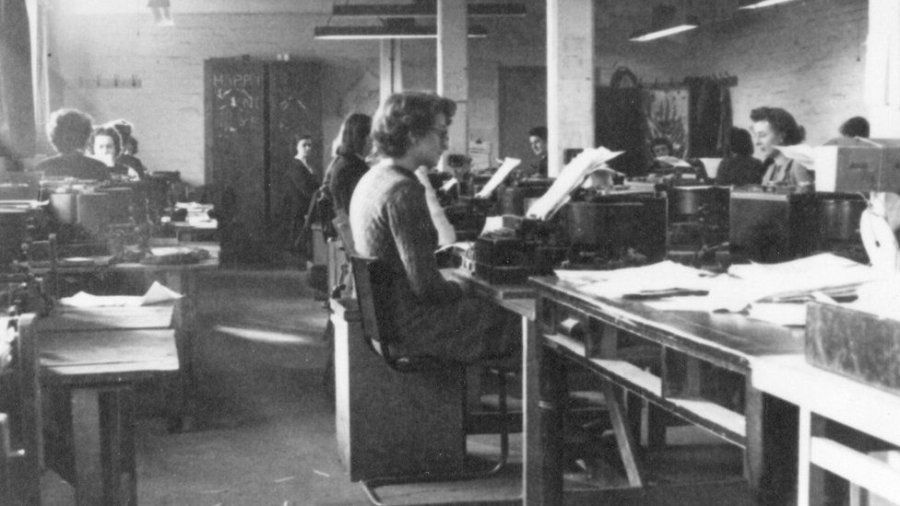
Britische Geheimdiensmitarbeiterinnen bei ihrer Arbeit.
Quelle: BBC

Right: Herbert Sorge died on April 9, 1980 at the age of 79. CN editor Karl Heinz Bischoff wrote the obituary shown at the time. Although Herbert Sorge risked his life to prevent the destruction of our city and thus ensured the survival of the population, this has never been officially acknowledged to this day. Things could have turned out very differently for him and his comrades and they could have ended up in front of a firing squad for high treason.MB

Source: Cuxhaven News
Sources: Cuxhven City Archives
Imperial War MuseumCuxhavener Zeitung
Image copyright of the Imperial War Museum IWM



